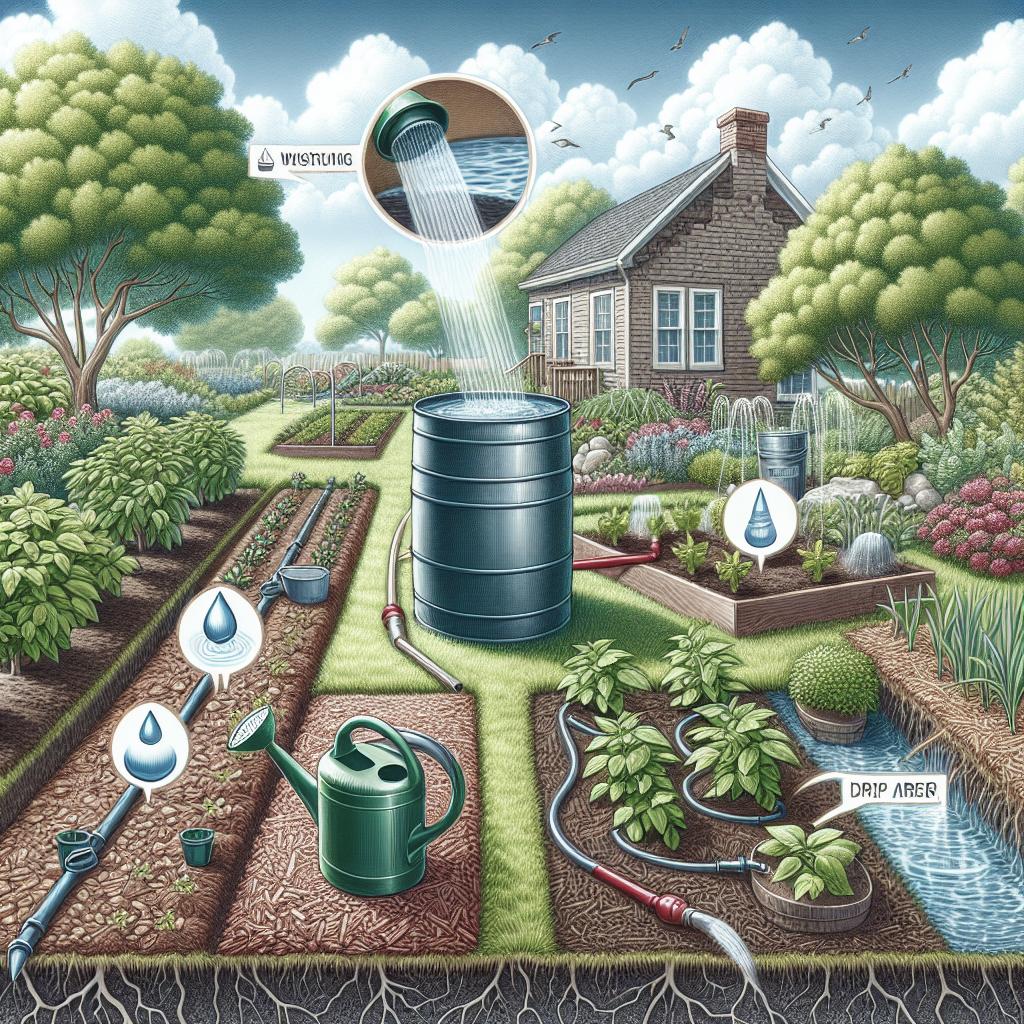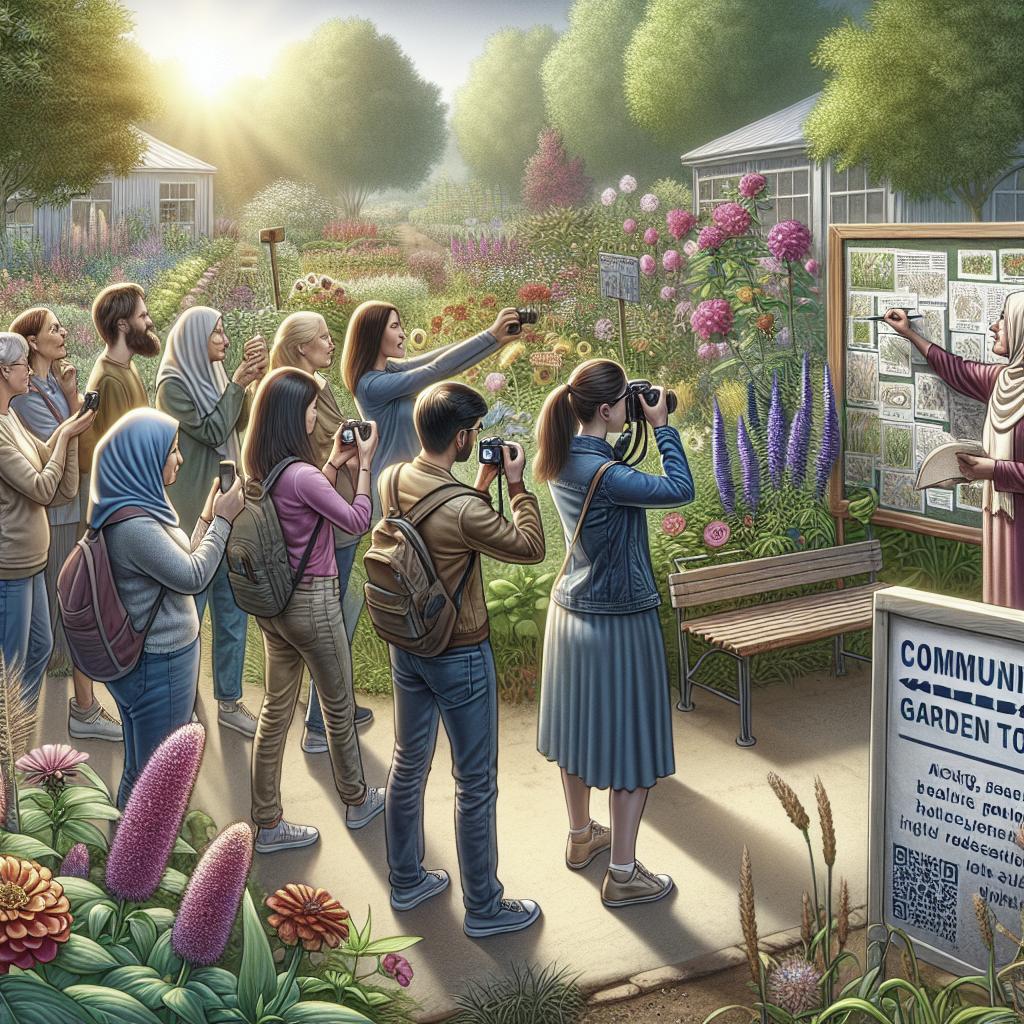“`html
Water Restrictions Will Continue to Play a Growing Role in Gardening
Water conservation has become an essential aspect of gardening, especially in regions prone to drought. As climate change continues to impact weather patterns worldwide, gardeners must adapt to more stringent water restrictions and find innovative ways to maintain their green spaces. Implementing water-saving techniques not only helps preserve this precious resource but also ensures the sustainability of our gardens. Whether you are an avid gardener with a vast vegetable garden or someone maintaining a small backyard, these practices can make a significant difference.
Here are 10 Tips to Help With Water Conservation in Your Garden
Tip 2: Use Mulches to Reduce Evaporation
Mulching is a tried and true method to conserve water in your garden. By spreading organic or inorganic materials over the soil, mulches help reduce evaporation significantly. Mulching materials like straw, wood chips, or compost can keep the soil around your plants cool and moist. As a result, it protects plant roots from extreme temperatures, decreases water loss, and even inhibits weed growth. Organic mulches have the added benefit of decomposing over time, enriching the soil with essential nutrients. Additionally, mulching helps to improve soil structure and aeration, promoting an overall healthier garden environment. Make sure to apply a generous, yet not overly thick, layer of mulch to achieve optimal results.
Tip 3: Use Drip Irrigation
Drip irrigation systems are an efficient way to supply water directly to the plant roots where it is most needed. Unlike traditional sprinkler systems, which often waste water through evaporation and runoff, drip irrigation delivers water slowly and consistently. This method ensures that more water reaches the plants, reducing waste and promoting healthier growth. Installing a drip irrigation system might initially require some investment in time and resources, but the long-term savings in water usage and the increased efficiency make it well worth it. Additionally, many drip systems can be automated, allowing you to schedule watering times and quantities based on weather conditions, plant types, and soil moisture levels.
Tip 4: Adjust Watering to Meet the Needs of the Vegetable
Different vegetables have varying water requirements, and adjusting your watering practices accordingly can lead to better water conservation. For instance, plants with deep root systems like tomatoes, peppers, and beans can be watered less frequently yet more deeply to encourage root growth. On the other hand, shallow-rooted plants like lettuce and radishes need more frequent but lighter watering. One effective strategy is to group vegetables with similar water needs together in the garden. This way, you can tailor your watering schedule and amounts to match their specific requirements, avoiding under- or over-watering any particular plant. Monitoring soil moisture and adjusting your practices based on the specific conditions can help optimize water usage even further.
Tip 5: Change the Types of Vegetables Grown if You Live in a Drought Area
In areas prone to drought, it may be necessary to reconsider the types of vegetables grown. Opting for drought-resistant varieties can make your gardening efforts more sustainable and reduce your reliance on supplemental watering. Some vegetables, like eggplants, peppers, and certain tomato varieties, are naturally more resilient to dry conditions. Additionally, experimenting with non-traditional garden crops such as native plants and herbs can also yield water-efficient options. Native plants are generally adapted to local climate conditions, making them better suited for water conservation efforts. Incorporating a diverse range of drought-tolerant plants in your garden can contribute to both visual appeal and environmental sustainability.
Tip 6: Change the Style of Planting
The way you plant your vegetables also has a significant impact on water conservation. Raised beds, for example, can help improve drainage and reduce water wastage, allowing you to control moisture levels more effectively. Raised beds warm up faster in the spring, extending the growing season, and often require less watering due to better soil structure. Another planting style to consider is using rows or companion planting techniques that maximize the use of water by grouping plants with similar needs and growth habits. By strategically planning your garden layout, you can create microclimates that retain moisture and reduce the need for frequent watering.
Tip 7: Know the Root Depth of Your Plants and Group Plants with Similar Water Requirements
Understanding the root depth of your plants is crucial for efficient watering. Deeply rooted plants require different watering schedules compared to those with shallow roots. For example, carrots and beets have deeper root systems, while lettuce and spinach have shallower roots. By grouping plants with similar root depths and water requirements, you can optimize your watering practices. This practice not only conserves water but also ensures that each plant receives adequate moisture levels. Creating zones in your garden based on these criteria can significantly improve water efficiency.
Tip 8: Adjust Watering Time and Flow to Match Your Soil Type
The type of soil in your garden plays a vital role in how water is absorbed and retained. Sandy soils, for example, drain quickly and may require more frequent watering, while clay-based soils retain moisture longer but can become waterlogged. Understanding your soil type allows you to adjust watering time and flow rates to suit its properties. Consider conducting a soil test to determine its composition and structure. Armed with this information, you can tailor your watering practices to enhance water retention, reduce waste, and ensure that your plants remain healthy and hydrated.
Tip 9: Keep Beds Weeded
Weeds compete with your garden plants for water, nutrients, and sunlight, making it essential to keep them under control. Regularly weeding your beds helps to minimize this competition and ensures that more water is available for your desired plants. Additionally, removing weeds prevents them from spreading and becoming a more significant issue over time. Implementing mulching and other weed control methods can keep your garden free of weeds, further promoting water conservation efforts. Staying vigilant and addressing weed growth early on can help maintain the overall health and sustainability of your garden.
Tip 10: Water During Cooler Times of the Day
Watering your garden during the cooler times of the day, such as early mornings or late evenings, can significantly reduce water loss due to evaporation. During these periods, the lower temperatures and reduced sunlight allow water to penetrate the soil more effectively, providing ample moisture to plant roots. Additionally, watering during cooler times can reduce the risk of plant scorch and minimize the growth of fungal diseases. By adopting this practice, you can ensure that your garden stays adequately hydrated while optimizing your water usage.
Additional Resources:
– [EPA Water Sense: Outdoor Water Use](https://www.epa.gov/watersense/outdoor) – [Water Conservation for Homeowners, Tips for Easy Ways to Conserve Water](https://www.home-water-works.org/) – [Gardening in Drought Conditions](https://www.gardeningknowhow.com/plant-problems/environmental/gardening-in-drought.htm)
Leave a Comment
Please share your experiences and tips for conserving water in the garden. We love hearing from our community!
The Right Approach for Water-Saving Gardening
Implementing water-saving techniques in your garden not only helps you adhere to water restrictions but also contributes to global water conservation efforts. Understanding your local climate, choosing appropriate plants, and tailoring your gardening practices can make a world of difference.
Practical Approaches to Water-Efficient Gardening
Consider integrating a combination of the tips mentioned above to create a holistic approach to water conservation. From utilizing drip irrigation systems to choosing drought-resistant plants, every small action contributes to a more sustainable gardening practice.
Other Assorted Watering Tips
Beyond the primary tips, consider using rain barrels to collect and store rainwater for later use, or installing a moisture sensor in your garden to monitor soil moisture levels accurately. Remember that consistency and mindfulness in your watering practices go a long way in reducing water waste.
| Tip | Description |
|---|---|
| Use Mulches to Reduce Evaporation | Applying mulch helps to keep the soil cool, moist, and reduces water loss. |
| Use Drip Irrigation | This efficient system delivers water directly to plants’ roots, minimizing waste. |
| Adjust Watering to Meet the Needs of the Vegetable | Tailority your watering schedule based on the specific water requirements of each vegetable. |
| Change the Types of Vegetables Grown in Drought Areas | Opt for drought-resistant varieties to reduce your water usage. |
| Change the Style of Planting | Using methods like raised beds and companion planting can improve water retention and usage. |
| Know Root Depth and Group Plants Accordingly | Grouping plants by similar root depths and water needs optimizes watering. |
| Adjust Watering Time and Flow to Match Soil Type | Tailor your watering practices to suit the specific properties of your soil. |
| Keep Beds Weeded | Weed removal reduces competition for water and nutrients in your garden. |
| Water During Cooler Times of the Day | Watering early in the morning or late in the evening reduces evaporation and maximizes water absorption. |
“`


